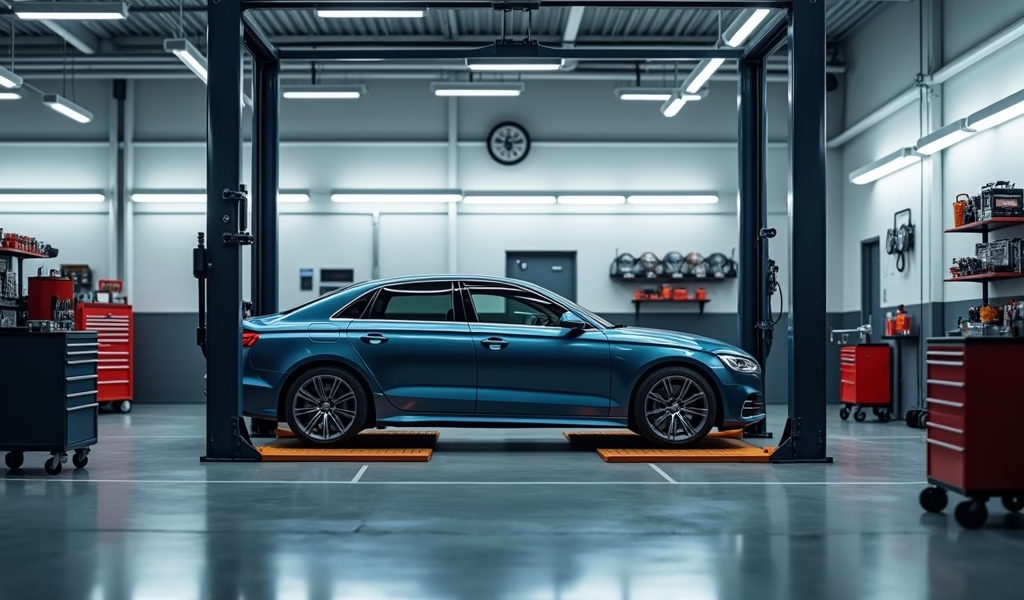Overview
This article presents five essential car maintenance practices that can help prevent auto accidents, including weekly inspections, proper tire care, fluid management, brake maintenance, and electrical system checks. Proper vehicle maintenance not only extends a car’s lifespan and saves money but more importantly ensures safety on the road while potentially avoiding legal complications that could arise from negligent maintenance in accident scenarios.
Table of Contents
- Introduction: Preventing Auto Accidents Through Proper Car Maintenance
- Hack #1: The 10-Minute Weekly Inspection That Could Save Your Life
- Hack #2: Tire Maintenance Secrets Most Drivers Miss
- Hack #3: Fluid Checks and Changes That Prevent Breakdowns
- Hack #4: Brake Maintenance You Can Do Yourself
- Hack #5: Electrical System Troubleshooting Made Simple
- Legal Considerations: When Maintenance Issues Lead to Accidents
- Conclusion: Staying Safe Through Smart Maintenance
- Frequently Asked Questions
Introduction: Preventing Auto Accidents Through Proper Car Maintenance
As someone who’s spent over 20 years with my hands covered in engine oil, I’ve seen firsthand how proper maintenance can be the difference between a safe journey and needing an auto accidents lawyer after a preventable crash. The National Highway Traffic Safety Administration reports that vehicle maintenance issues contribute to approximately 12-13% of all traffic crashes. That’s thousands of accidents that could have been avoided with some basic car care knowledge.
In my experience, most folks aren’t neglecting their vehicles intentionally—they simply don’t know what to look for or how simple some preventative maintenance can be. The good news? You don’t need to be a certified mechanic to keep your vehicle in safe, reliable condition.
Let’s dive into five car care hacks that can help you avoid becoming another statistic—and potentially save you from needing to search for a skilled auto crash attorney after a mechanical failure. These tips are straightforward, require minimal tools, and can be done in your driveway with just a bit of patience.
Hack #1: The 10-Minute Weekly Inspection That Could Save Your Life
One of the simplest yet most effective habits you can develop is the 10-minute weekly inspection. Think of it as a quick health check-up for your vehicle. I recommend doing this on Sunday evenings or whenever works consistently for your schedule.
Here’s what your quick inspection should include:
- Walk around your vehicle looking for anything unusual: leaks underneath, tire bulges, or damaged lights
- Check all exterior lights (headlights, brake lights, turn signals)
- Examine windshield wipers for cracks or deterioration
- Test your horn
- Check tire pressure with a gauge (including the spare)
This simple routine has helped countless drivers in my garage avoid potential disasters. Consider this: NHTSA studies show that vehicles with underinflated tires are three times more likely to be involved in a crash related to tire problems. That quick pressure check could literally save your life.
I remember a regular customer, Sarah, who spotted a small puddle under her car during her weekly check. What seemed minor turned out to be a brake fluid leak that could have resulted in complete brake failure on the highway. That 10-minute habit potentially saved her from a serious accident and the subsequent need for a motor vehicle accident lawyer.

Hack #2: Tire Maintenance Secrets Most Drivers Miss
Your tires are literally where the rubber meets the road—they’re your vehicle’s only contact with the pavement. Yet, in my experience, they’re often the most neglected maintenance item. Beyond checking pressure, there are several tire maintenance habits that can significantly reduce your accident risk.
First, learn to check your tread depth regularly. The penny test is simple: insert a penny with Lincoln’s head upside down into your tire tread. If you can see all of Lincoln’s head, your tread is worn below the safe 2/32″ depth and you need new tires immediately. According to Consumer Reports’ tire safety research, driving with worn tires can increase stopping distances by up to 87 feet on wet roads.
Second, rotate your tires every 5,000-7,000 miles. This ensures even wear and extends tire life. I’ve seen countless customers puzzled by their car pulling to one side, not realizing it’s simply due to uneven tire wear that could have been prevented with regular rotations.
Third, check wheel alignment annually or whenever you notice your vehicle pulling to one side. Proper alignment not only prevents premature tire wear but also ensures your vehicle responds correctly in emergency situations.
Finally, don’t forget your spare tire! Many drivers who find themselves stranded after a blowout discover their spare is flat or deteriorated. Check your spare’s condition and pressure monthly—it’s insurance you hope never to use, but will be grateful for when needed.
I’ve witnessed the aftermath when these simple maintenance tasks were overlooked. Many accidents that bring folks to an experienced motor vehicle accident lawyers office begin with something as preventable as a tire blowout or hydroplaning on bald tires.
Hack #3: Fluid Checks and Changes That Prevent Breakdowns
Your vehicle runs on multiple fluids, each serving a critical function. Knowing how to check these fluids is a simple skill that can prevent catastrophic failures that might otherwise lead to accidents.
Engine oil is the lifeblood of your engine. Check it every two weeks when the engine is cool and on level ground. Low oil levels can cause engine seizure—imagine that happening at highway speeds. Modern synthetic oils allow for longer intervals between changes (often 7,500-10,000 miles), but don’t push beyond manufacturer recommendations.
Brake fluid should be checked monthly. The reservoir is typically transparent, allowing you to see the level without opening it. If you notice the level dropping regularly, you likely have a leak that requires immediate attention. Brake fluid should be clear to amber in color—if it’s dark brown or black, it’s time for a flush.
Coolant levels are crucial for preventing overheating. Check when the engine is cool by examining the overflow tank. Never open a hot radiator cap! Coolant should typically be changed every 2-5 years depending on your vehicle and the type of coolant used.
Transmission fluid checks vary by vehicle, so consult your owner’s manual. In many newer vehicles, this is a dealer-only check. However, if your vehicle has a dipstick for transmission fluid, check it with the engine running and warm, after cycling through all gears.
Power steering fluid and windshield washer fluid are also important to monitor. The former ensures your steering remains responsive in emergency situations, while adequate washer fluid helps maintain visibility in adverse conditions.
I’ve seen too many preventable accidents resulting from fluid-related failures. Take Marcus, whose radiator ran dry on a summer road trip. The subsequent overheating caused his engine to seize, sending his vehicle into a guardrail. What followed was months of recovery and lengthy discussions with his auto accidents lawyer—all preventable with a simple coolant check before his journey.
Hack #4: Brake Maintenance You Can Do Yourself
Brake failures contribute to approximately 5% of all motor vehicle crashes according to the Department of Transportation. While complete brake work should be left to professionals, there are several maintenance checks you can perform to ensure your braking system remains reliable.
Listen for warning signs. Squealing, grinding, or pulsating during braking all indicate potential issues. Don’t dismiss these sounds—they’re your vehicle’s way of signaling trouble. I’ve had customers ignore brake noise for months, only to experience complete failure when they needed to stop quickly.
Visually inspect your brake pads through the wheel spokes. You should see at least 1/4 inch of pad material. If you see less, schedule service immediately. Most modern vehicles also have brake wear indicators that will illuminate on your dashboard when pads need replacement.
Check brake lines for leaks or corrosion when you’re under your vehicle for oil changes. Look for wet spots or crusty white residue along rubber hoses and metal lines. A brake fluid leak can quickly progress from a minor issue to complete brake failure.
Test pedal firmness regularly. If your brake pedal feels spongy or gradually sinks to the floor when held down, air may have entered the system. This requires professional attention immediately, as air in the brake lines dramatically reduces stopping power.
I remember helping a young driver whose vehicle had been making a grinding noise for weeks. She’d put off having it checked, assuming it was a minor annoyance. By the time she brought it in, the brake pads were completely gone and the rotors severely damaged. She was fortunate the failure happened in our parking lot rather than on a busy intersection where she might have needed an auto wreck lawyer afterward.

Hack #5: Electrical System Troubleshooting Made Simple
The electrical system in modern vehicles controls everything from engine performance to critical safety features. While complex electrical work requires specialized knowledge, there are several checks any driver can perform to prevent electrical failures that might lead to accidents.
Battery maintenance is the cornerstone of electrical system health. Inspect your battery terminals for corrosion—a powdery white or greenish substance. This can be cleaned with a mixture of baking soda and water, using an old toothbrush. Ensure terminals are tight; loose connections can cause intermittent electrical problems that might leave you stranded.
Learn to check your battery’s age. Most batteries have a date code stamped on top—typically a letter (A-L) for month and a number for year. The average battery lasts 3-5 years, though extreme temperatures can shorten this lifespan.
Keep jumper cables or a portable jump starter in your vehicle. However, understand that frequent jumping may indicate a deeper charging system issue that needs professional diagnosis. Modern vehicles can suffer electronic damage from improper jump starting, so familiarize yourself with your owner’s manual instructions.
Check all lights monthly. This includes headlights, brake lights, turn signals, and hazard flashers. Faulty lighting reduces your visibility to other drivers and increases accident risk, particularly at night or in poor weather.
Monitor your vehicle’s charging system warning light. If it illuminates while driving, your alternator may be failing. Contrary to popular belief, you can’t drive long distances with a failed alternator, even with a good battery. The battery will eventually deplete, causing your vehicle to stall—potentially in dangerous traffic situations.
I’ve assisted many drivers whose preventable electrical failures led to accidents. One particularly memorable case involved a driver whose vehicle stalled on a busy highway due to alternator failure. The sudden loss of power affected his power steering and brakes, leading to a collision that could have been prevented with basic electrical system awareness.
Legal Considerations: When Maintenance Issues Lead to Accidents
While these maintenance hacks can significantly reduce your accident risk, it’s important to understand the legal implications of vehicle maintenance in accident scenarios.
If you’re involved in an accident caused by a maintenance issue, liability may not be straightforward. If you knowingly drove with a serious maintenance defect—such as bald tires or faulty brakes—you could be found negligent. This can affect insurance claims and potential legal proceedings.
Conversely, if your properly maintained vehicle experiences a genuine mechanical failure causing an accident, you may have recourse against manufacturers or service providers. This is where documentation becomes crucial.
Keep detailed maintenance records of all services performed, whether by yourself or professionals. These records can be vital evidence if you need to demonstrate you’ve maintained your vehicle appropriately.
For commercial vehicles, the legal stakes are even higher. Commercial operators are held to stricter maintenance standards, and failures can result in significant liability. This is why commercial fleets typically maintain rigorous inspection schedules.
If you’re involved in an accident where maintenance issues may be a factor—whether your vehicle or another party’s—consulting with an auto accidents lawyer who understands the technical aspects of vehicle maintenance can be invaluable. They can help determine if negligent maintenance contributed to the accident and advise on appropriate legal steps.
Remember, proper maintenance isn’t just about avoiding repair costs—it’s about legal protection and, most importantly, keeping yourself and others safe on the road.
Conclusion: Staying Safe Through Smart Maintenance
Throughout my decades turning wrenches and diagnosing vehicles, I’ve seen how simple maintenance habits can be the difference between a safe journey and a preventable tragedy. Each of the five hacks we’ve covered—weekly inspections, tire care, fluid management, brake checks, and electrical system awareness—represents a layer of protection against becoming another roadway statistic.
Vehicle maintenance isn’t just about extending your car’s life or saving money on repairs—though it certainly accomplishes both. At its core, proper maintenance is about safety. It’s about ensuring your vehicle responds predictably when you need to avoid a hazard, stops effectively when a child runs into the street, and doesn’t leave you stranded in dangerous situations.
The peace of mind that comes from knowing your vehicle is well-maintained is invaluable. Instead of worrying about potential breakdowns or failures, you can focus on the road ahead—alert and prepared for whatever comes your way.
I encourage you to implement these maintenance hacks into your routine. Start small if you’re new to vehicle maintenance—perhaps with just the weekly walk-around inspection. As your confidence grows, incorporate the other checks and procedures. Your future self will thank you—not just for the money saved on repairs and the extended vehicle life, but potentially for avoiding the trauma and complications of a preventable accident.
Stay safe out there, and remember: a little preventative maintenance today can prevent a call to an auto accidents lawyer tomorrow.
Frequently Asked Questions
What should I do immediately after a car accident?
First, ensure everyone’s safety by moving to a safe location if possible and calling emergency services. Then, exchange information with the other driver and document the scene with photos before contacting an auto accidents lawyer.
How does poor vehicle maintenance affect liability in an accident case?
Neglected maintenance that contributes to an accident can establish negligence, potentially making you liable for damages. Courts may consider your maintenance history as evidence of whether you exercised reasonable care in vehicle operation.
Can I handle my own accident claim without an auto accidents lawyer?
You can handle minor accidents yourself, but serious accidents with injuries or disputes over fault generally require professional legal assistance. An auto accidents lawyer can help navigate complex insurance negotiations and protect your rights to fair compensation.
How long do I have to contact an auto accidents lawyer after a crash?
Statutes of limitations vary by state, typically ranging from one to three years for car accidents. It’s best to consult with an attorney as soon as possible to preserve evidence and meet all legal deadlines.
What maintenance records should I keep to protect myself legally?
Keep all service receipts, inspection reports, and documentation of repairs or part replacements. These records can demonstrate you maintained your vehicle appropriately if maintenance becomes a liability issue in an accident case.

